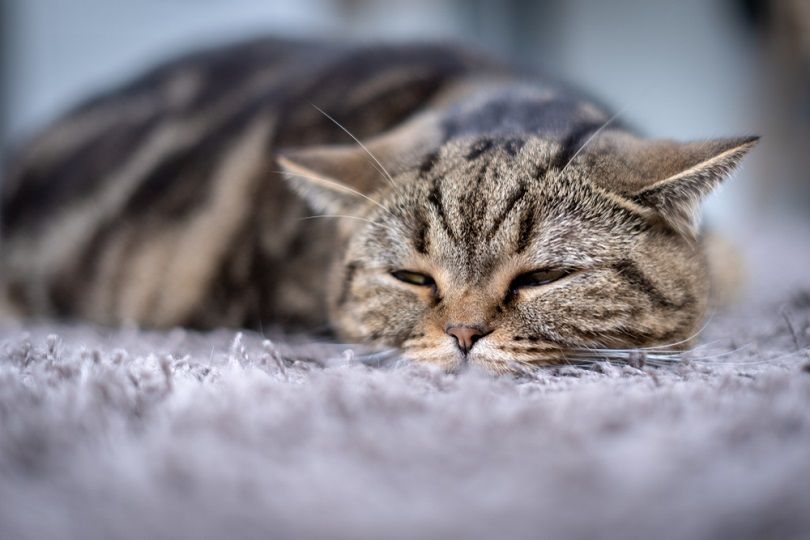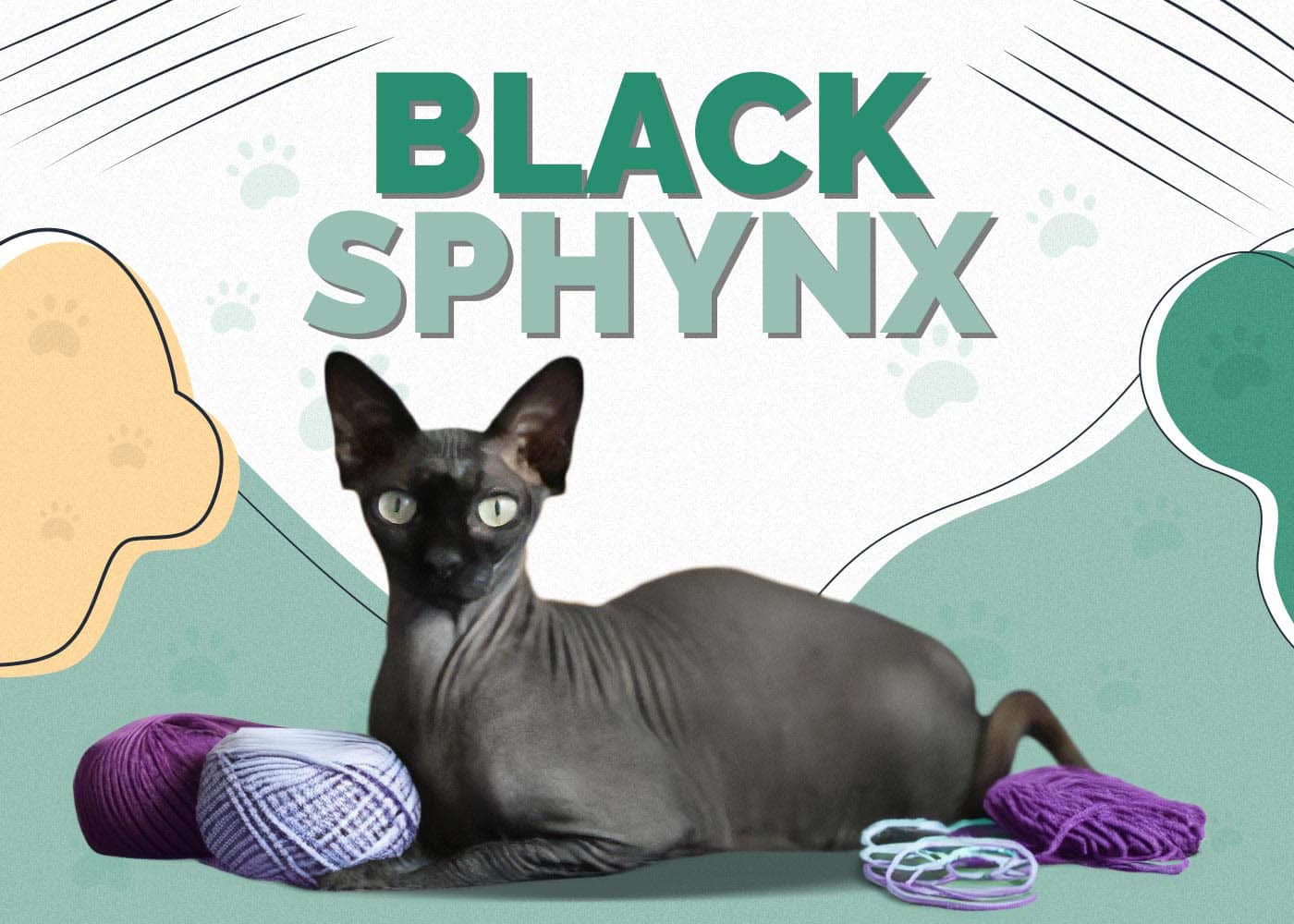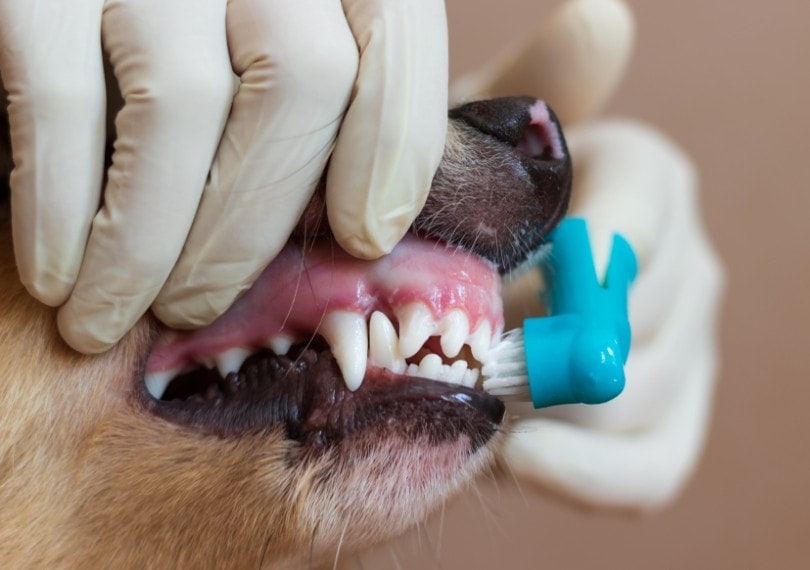How Does a Professional Groomer Bathe Cats? (Step-by-Step Explained)
Updated on
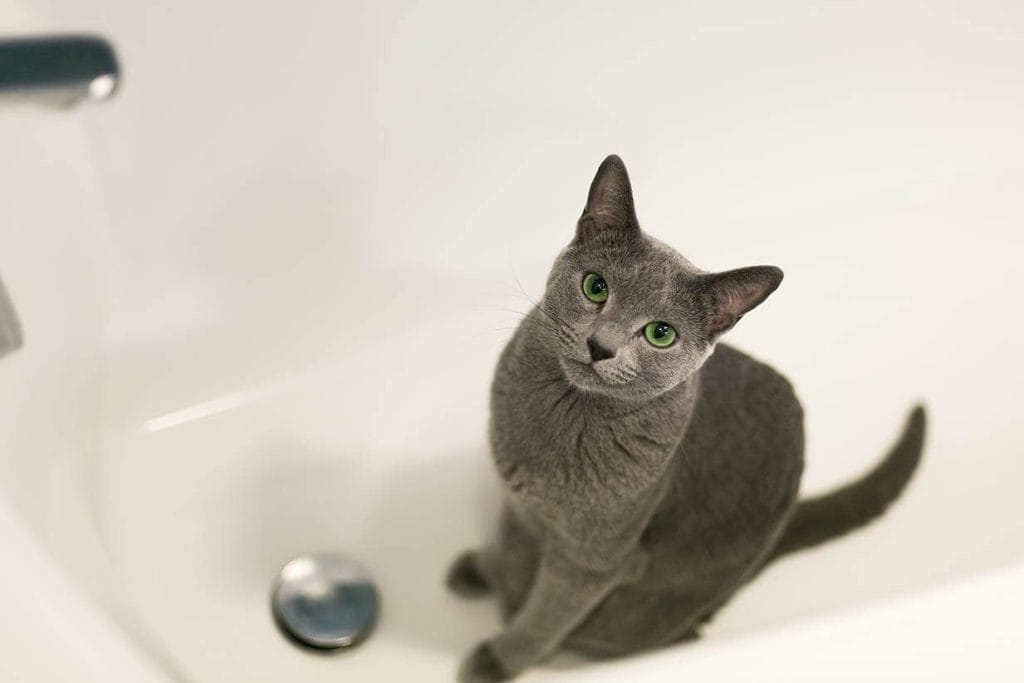
Everyone knows just how much most cats hate water, but sometimes, a bath becomes necessary for the health and well-being of your cat. Whether your cat does not groom themselves properly or they got into something, you may have to bath them. It can be extremely difficult to bathe a cat at home and walk away unscathed, so many people turn to the services of a professional groomer.
What is it that the groomer does so differently, though? How can they bathe cats regularly and live their lives without being covered by head-to-toe scratches? Keep reading to find out.
The 3 Steps That Professionals Use to Bathe Cats
1. First Steps
To safely give a cat a bath, there are a few steps that a groomer will take ahead of time. Setting the calmest environment as possible gives the greatest chance of a cat being calm for its bath. While it is likely not possible to ensure a quiet, calm environment, groomers will aim to keep any cats in the quietest and calmest part of the grooming salon.
When the space is available, groomers will keep cages in a separate room for cats and nervous dogs. Gentle music and white noise can also be used to help cover some of the stressful sounds of the grooming salon to keep pets calm.
The groomer will also ensure they have everything ready before they even take the cat out of its cage. This means having any special supplies on hand, as well as having all bathing products, like shampoo, conditioner, brushes, and nail clippers within reach. Preparation helps ensure that the groomer won’t have to put the cat back into its cage or go back and forth for more supplies. They’ll also make sure the water temperature is comfortable.
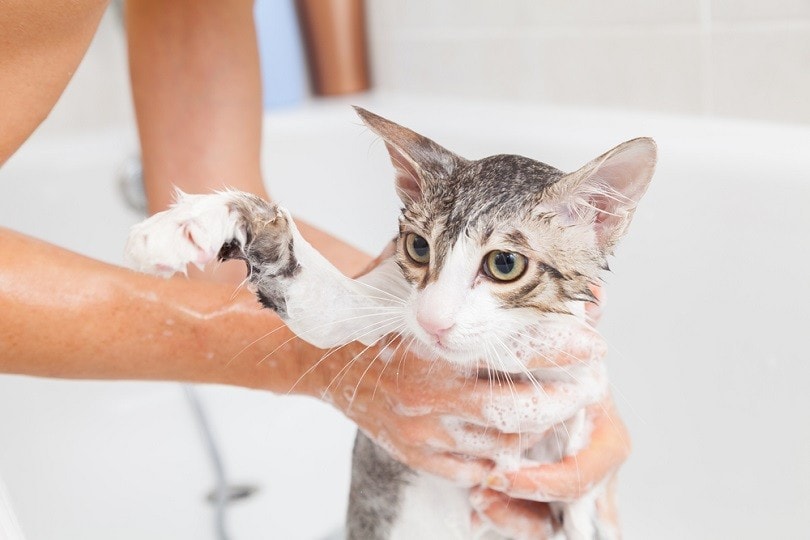
2. The Right Supplies
Different groomers may have individual preferences of supplies to make bathing a cat easier, but there are a variety of products on the market to help out. Mesh bathing bags are a great way to keep a cat from getting hurt or hurting the groomer. There are also multiple options for cat muzzles that allow the cat breathing room while preventing bites.
For some cats, less is more, in which case a groomer might not use any special products to keep the cat secure. For cats that prefer less invasive methods, being handled gently and still being allowed some freedom of movement will help keep them calm.
A mat, towel, or grate can be used in the bottom of the tub to ensure the cat has traction during the bath. If a cat is slipping and sliding all over the bathtub, they will likely feel unsafe and insecure, leading to more stress with their bath and less likelihood of cooperating in the future.
There are a lot of pet shampoos on the market, but not all of them will keep your pet's skin and coat happy and healthy. The Hepper Pet Shampoo products are pH balanced and made with natural, safe ingredients like soothing oatmeal and aloe vera. Our shampoos will keep your pet clean, smelling fresh, and fully moisturized! The hardest part is deciding whether to get to traditional shampoo or the rinse-free version! Here’s a quick guide to help you choose the right option for your pet’s next bath!
 Hepper Colloidal Oatmeal Pet Shampoo |
 Hepper Waterless No Rinse Pet Shampoo |
|
|---|---|---|
| Natural cucumber & aloe scent |
Natural cucumber & aloe scent:
|
Natural cucumber & aloe scent:
|
| Safe for cats & dogs |
Safe for cats & dogs:
|
Safe for cats & dogs:
|
| Rinsing required |
Rinsing required:
|
Rinsing required:
|
| Free of harsh chemicals & nasty ingredients |
Free of harsh chemicals & nasty ingredients:
|
Free of harsh chemicals & nasty ingredients:
|
| Lathers easily |
Lathers easily:
|
Lathers easily:
|
3. Giving a Bath to a Cat
Once the groomer has all of the necessary supplies and the water warmed up, they’ll get the cat moved to the bath. They’ll start by ensuring that any nail trimming and grooming are done prior to it starting. This will make the bath go by more quickly and easily, as well as decrease the risk of damage being done by sharp claws.
After the grooming is out of the way, most groomers will gently place the cat in just a few inches of warm water. They may use a gentle spray to wet the cat, but some groomers prefer to use a cup to pour water over the cat. This is often less stressful for the kitty. Sometimes, breaks throughout the bath are also needed to reduce stress.
Once the cat is wet, they’ll apply shampoo, likely while keeping one hand securely on the cat to keep them from trying to escape. Then they will rinse thoroughly, apply another coat of shampoo if needed, apply conditioner, and get the cat out of the tub. It is important to ensure that all shampoo is rinsed off thoroughly. Shampoo that is left on the skin can create irritation.
After the bath, a thorough towel drying will be used to dry the cat as much as possible. For cooperative and calm cats, a hand dryer may be used to dry them most or all of the way, while a cage dryer may be necessary for uncooperative cats or for ensuring the cat is fully dry.
In Conclusion
On top of having multiple tricks up their sleeves, groomers are experienced with handling stressed and scared animals. This often gives them an advantage to bathing cats that you wouldn’t have at home with your own cat. If your cat is uncooperative during baths at home, then taking them to a professional groomer may be necessary to ensure your cat’s hygiene and health are maintained.
Featured Image Credit: Irina Borodovskaya, Shutterstock

